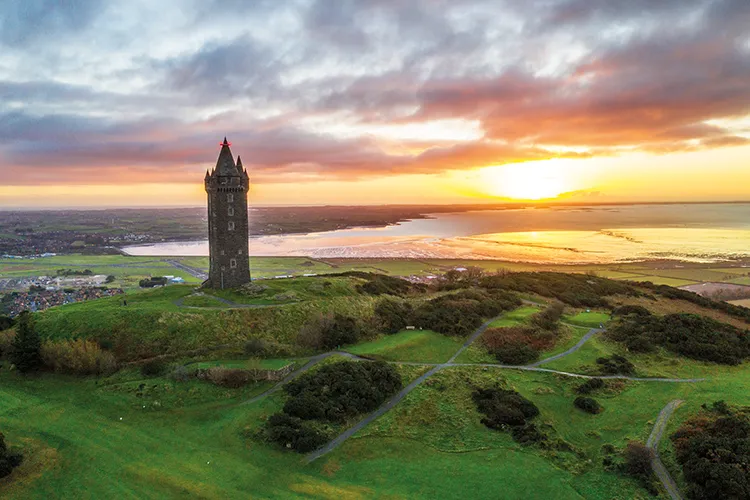
After Britain’s driest summer for decades revealed long-forgotten objects and buildings, Rory Walsh looks for the ‘Lake District Atlantis’
Discovering Britain
View • Rural • North West England • Web Guide
Summer 2022 was Britain’s driest for decades. As wildfires and hosepipe bans spread, much of the land boiled between blue skies and yellow grass. On 19 July temperature records were smashed at 46 weather stations. Coningsby in Lincolnshire hit 40.3˚C. By August, 11 of the 14 Environment Agency regions were officially in drought. Reservoirs were at their lowest level since 1995. Images of them emptying like giant sinks flooded social media channels.
Haweswater Reservoir, in the valley of Mardale, is the highest and most easterly lake in the Lake District. It supplies 25 per cent of northwest England’s water. When full, it holds 84 billion litres. When half-full, curious gnarled shapes break the surface. From a distance they resemble sunbathing alligators. Prolonged dry spells reveal their true form. As the water level drops, objects rise from the deep: stone walls, a humped-back bridge, tree stumps, gate posts. These are the remains of Mardale Green, the ‘Lake District Atlantis’.
For centuries Mardale Green was a picturesque Cumbria village. Until it was drowned by thirst for water. By 1931 Manchester was home to 751,000 people, who all needed to drink, cook, wash and work. The Lake District’s deep glacial valleys offered a suggestive site for a reservoir. In 1929 the government granted the Manchester Corporation permission to dam and flood Mardale. The area that a contemporary newspaper described as ‘one of the most secluded and peaceful places in the Lake District’ was transformed forever.
DISCOVER MORE ABOUT BRITAIN…
Despite protests, Mardale Green was evacuated and destroyed. The village’s medieval church, Holy Trinity, usually held 75 people. Hundreds gathered for the final service in August 1935. The dead departed alongside the living. Bodies in the churchyard were exhumed and reburied elsewhere. The church itself was dismantled brick by brick. Some of the windows and masonry were used to build the reservoir’s draw-off tower. The rest of Mardale Green was blown up. The Royal Engineers used the abandoned buildings, including the historic Dun Bull Inn, to test plastic explosives.
Once the firing ceased, the flooding started. For years Mardale Green lay out of sight underwater. Then in 1976 the heatwave that led to water rationing uncovered the village. It has resurfaced several times since, including in 1983, 1995, 2018, 2021, and 2022. Mardale Green’s watery grave is more often a shallow one. The village’s reappearances reveal the costs of slaking our thirst – to our climate and our communities.









